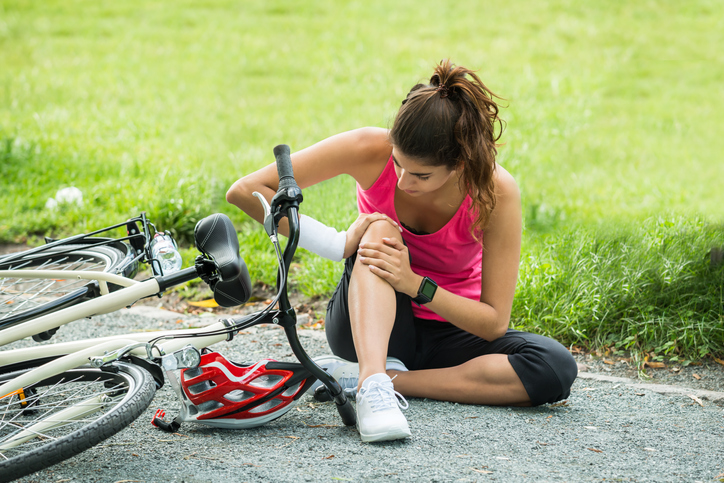Bicycle use has skyrocketed during the COVID-19 pandemic, with bicycle sales increasing nearly 60% in 2020 and 2021 alone. Unfortunately, the increased number of cyclists out on the road has translated into more collisions between motor vehicles and bicycles during these past few years as well.
For example, bicycle accidents in Florida hit an all-time high, with 7,131 bicycle accidents reported in 2022. This number is 7% higher than the state’s pre-pandemic numbers. More importantly, the number of cyclists injured or killed was nearly 7.6% higher in 2022 than it was in 2019, meaning recent accidents have become more likely to harm cyclists.
Causes of Bicycle Accidents
Most collisions between bicycles and motor vehicles happen when drivers hit cyclists. In other words, cyclists rarely crash into moving vehicles.
Driver actions that can lead to a crash include the following:
- Failing to yield the right of way to bicycles at crosswalks and intersections
- Turning left across a bicyclist’s path
- Turning right into a cyclist crossing the street
- Distracted driving
- Intoxicated driving
- Changing lanes without looking
However, just because drivers usually collide with cyclists does not mean that drivers always bear the fault for these crashes. Drivers can hit cyclists despite driving carefully and exercising due care, and cyclists can hit parked vehicles, most often when a motor vehicle occupant opens their door, and the cyclist crashes into it.
Other cyclist behaviors that can lead to a collision include the following:
- Riding while intoxicated
- Crossing outside of a marked crosswalk
- Running red lights or stop signs
- Making unsafe lane changes
Cyclists have almost no protection against injuries in a collision, which means they can easily lose their balance and tip over, and the resulting fall can break bones and tear soft tissue. In a worst-case scenario, the cyclist can be hit and ejected from their bicycle. They can suffer injuries in both the initial collision with the vehicle and the secondary impact on the road.
Common Bicycle Accident Injuries
Bicycle accident injuries tend to follow certain patterns due to the forces involved in a crash. As such, some common injuries include the following:
Head or Face Injuries
Head injuries are very common in bicycle accidents, and the likelihood of sustaining a head injury depends on whether the cyclist wore a helmet. According to one study, cyclists who do not wear a helmet have a 43% chance of suffering a head injury, while those who do only sustain head injuries 15% of the time.
Overall, roughly 35% of bicyclists involved in accidents will suffer an injury to the head or face. These injuries can range in severity and include things like:
- Cuts and scrapes
- Bruises
- A fractured skull
- Fractured facial bones
- Dental fractures
- A broken nose
- Eye injuries
The most significant risk associated with a head or face injury, however, is that the blow may cause the brain to shift in the skull, leading to a traumatic brain injury (TBI).
Traumatic Brain Injury
TBIs occur when the tissues of the brain are damaged, which can happen in many ways, such as:
Concussions
A concussion is considered to be a mild injury, as — instead of hitting the inside of the skull — the brain only sloshes in its protective fluid, but the pressure of that fluid can cause the brain to swell, leading to headaches, confusion, and clumsiness.
Cerebral Contusions
These injuries happen when the brain slams into the skull, the impact of which can burst small blood vessels and damage or outright destroy brain cells. The blood from the burst vessels can also squeeze the brain, causing further damage.
Subdural Hematomas
A subdural hematoma is the result of a torn blood vessel in the brain. Blood loss causes brain cells to die, and the pressure caused by that bleeding compresses other blood vessels, cutting off the brain’s blood supply.
Bone Fractures
The impact of a cyclist’s body onto the other vehicle or the ground can snap their bones, with the most common fracture in a bicycle crash affecting the clavicle, or collarbone, which can cause shoulder pain and swelling. Other common fractures from bicycle accidents include fractures in the following areas:
Fractures to the neck, ribs, and hips can also happen, though they are relatively infrequent compared to the above body parts.
Strains and Sprains
Ligaments hold bones together at their joints, and when those joints hyperextend, the ligaments stretch and tear. Ligament injuries, also called sprains, can cause any of the following symptoms:
- Joint pain and inflammation
- Limited joint motion
- Bruises
In a similar fashion, tendons connect muscles to bones and can be stretched, torn, or otherwise damaged when the body hyperextends. These strains can cause symptoms such as:
- Muscle pain and weakness
- Swelling
- Stiffness
The most common body parts affected by these sorts of strains and sprains after an accident include the shoulders, arms, elbows, wrists, legs, knees, and ankles.
Road Rash
Road rash is a severe abrasion that is formed when your skin scrapes across the pavement. When your skin scrapes across the road, the rough surface digs into your skin and rips into it. If you hit the ground at high speeds, you will also suffer a friction burn. This combination of grinding and burning causes road rash.
In extreme situations, you may even suffer from traumatic tattooing, which occurs when the force of the road rash embeds dirt or other debris into the skin, producing permanent marks.
Prevention of Bicycle Injuries
Wearing a helmet can significantly reduce your risk of head injury, and Florida law requires bike helmets for riders and passengers under 16. Nevertheless, even if the law allows you to ride without a helmet, you should still wear one to better protect yourself. You also need to exercise caution when riding in traffic. The most common cause of bicycle collisions is careless, distracted, or intoxicated vehicle drivers. You should ride defensively, even when using bike lanes, and always use hand signals and scan your surroundings when you change lanes or make turns. Assume that drivers passing you or turning across your path have not seen you, and if you ride at night, you must check that your bicycle is equipped with lights and reflectors.
Bicycle injuries are not inevitable, but riding defensively and making sure you have the right equipment will help you reduce your risk of suffering from a serious accident.


